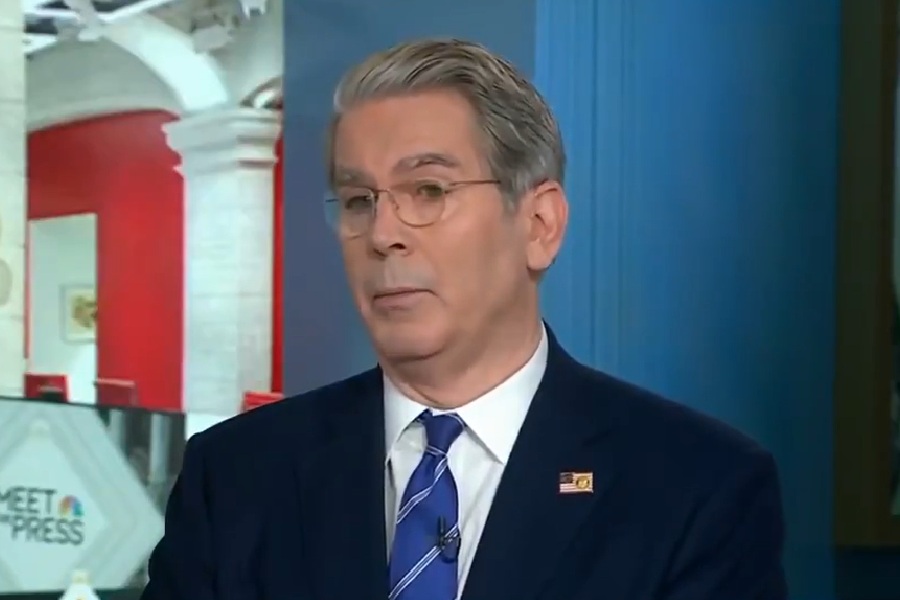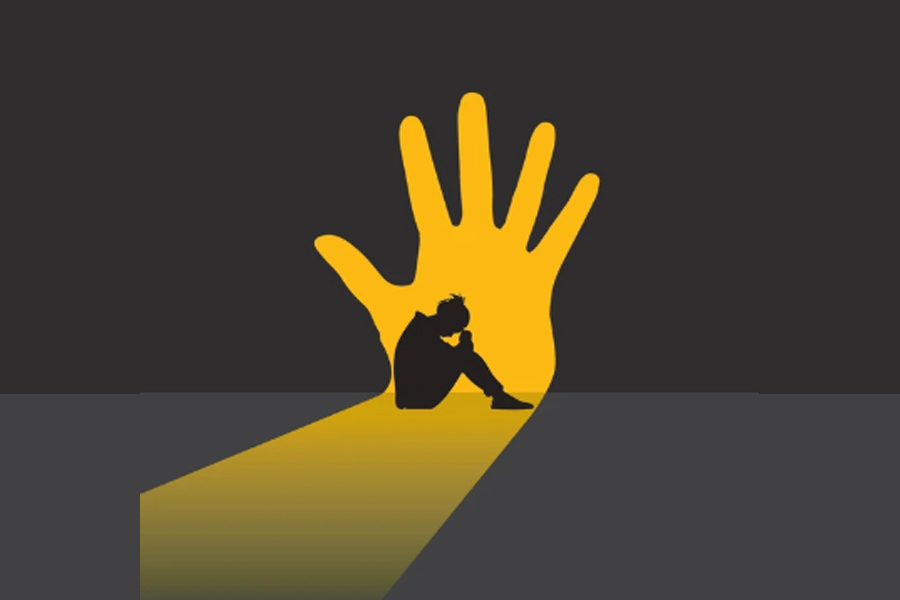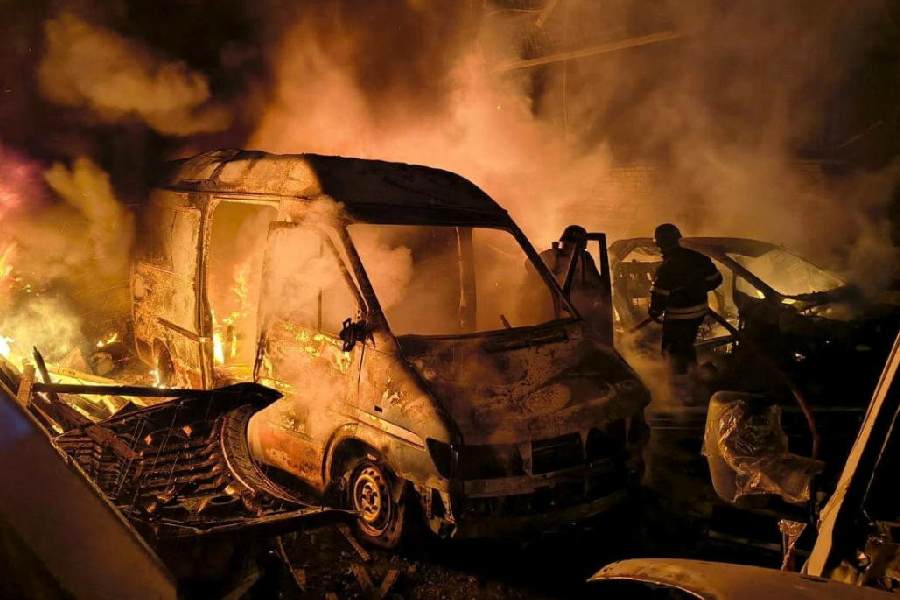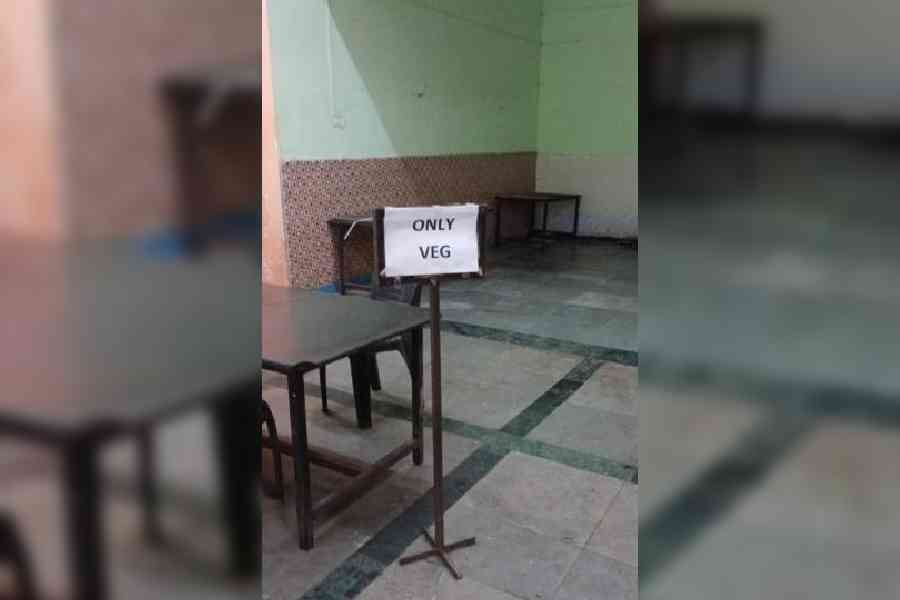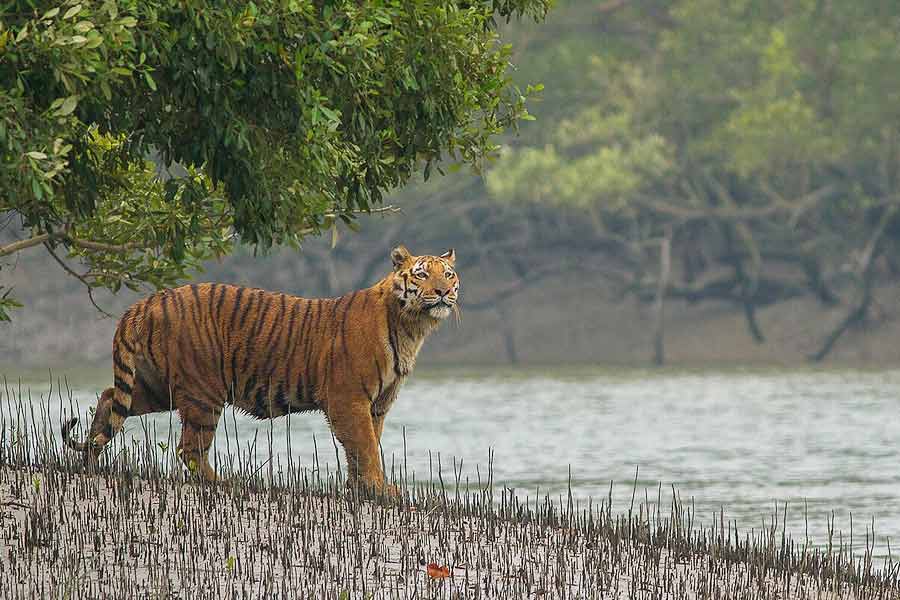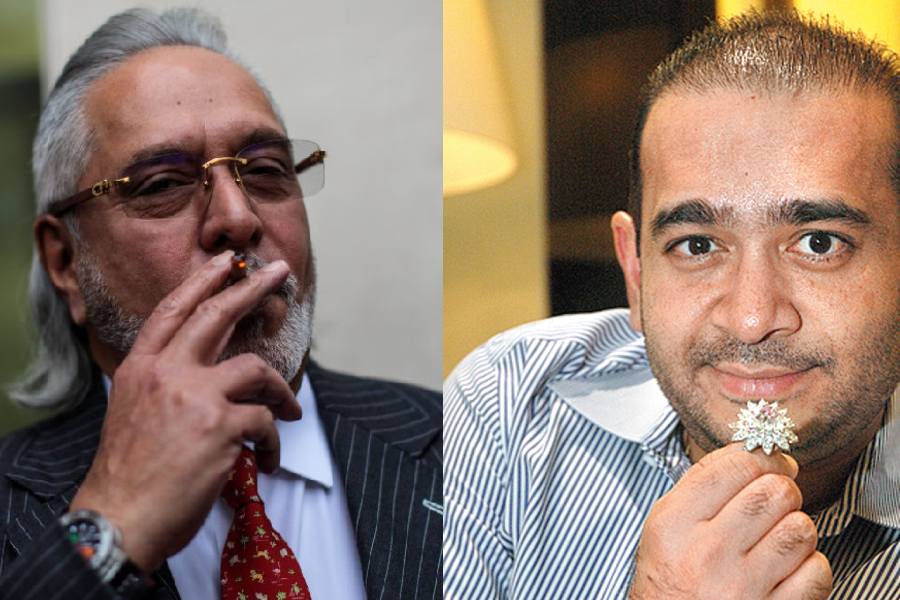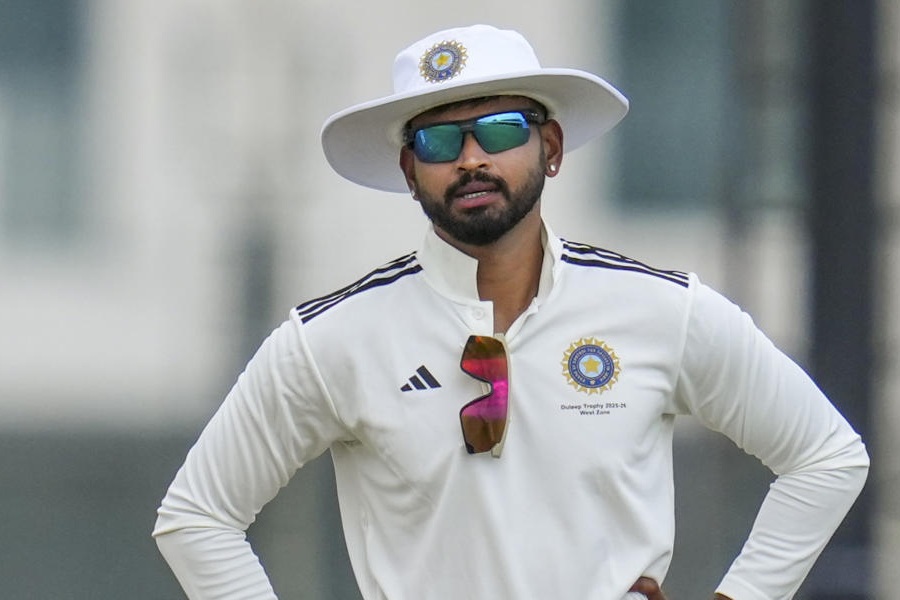 |
| The pictures in the two galleries |
Silent music starts to play as one steps into the two picture galleries at 46 Pathuriaghat Street, a house about two-centuries-and-a-half old that is a storehouse of memories of two great patrons of Hindustani classical music and the All Bengal Music Conference, still remembered as the mother of all music conferences. Adjoining this building is the colonnaded mansion of the Khelat Ghosh branch of the family.
The galleries are two large halls on the first floor, above the thakurdalan. On the walls of the two halls – one of them a billiard room – hang the portraits of leading musicians born either in late 19th or early 20th century, some of whom, in spite of their brilliance, were content to perform for Calcutta audiences alone. There was no audience either as appreciative or knowledgeable as the Calcutta audience.
Ramlochan Ghosh, who was diwan of governor general Warren Hastings, had established this family. His descendant Bhupendra Krishna Ghosh was a great lover of music. His resident musician was the great Radhikaprasad Goswami in the Twenties. He lived in Ghosh’s house in Masjid Bari Street. A young A. Kanan, too, lived there. Later, Radhikababu’s nephew, the handsome Jnanendra Prasad Goswami lived in Ghosh’s Pathuriaghat home. The room meant for this singer, who stole the hearts of courtesans, is still known as “Genubabu’s room.”
All the legendary vocalists and instrumentalists from all over the country used to stay there whenever they passed through Calcutta. Vishnu Digambar Paluskar did for months on end. So did Hafiz Ali Khan, Omkarnath Thakur and Faiyaz Khan. Bhupenbabu started collecting their photographs from those times. His son Manmatha continued this practice. Though many of the portraits have disintegrated with age and neglect, about a hundred have survived – 35 in the billiard room and 56 crowded in a smaller hall. The rest have been reframed and touched up recently.
Most of these portraits are actually photographs hand-tinted to resemble paintings. They are remarkable not only because they are the only likenesses available of these musicians, many of them forgotten, but they are also very fine examples of early 20th century hand-painted photographs.
In the beginning these skilfully-executed portraits were created by Durganath Bhattacharya and subsequently by Kesto Bhattacharya and others. Verisimilitude was ensured by checking with the small original prints. The portrait of Tansen was copied from the Jaipur museum version. The first attempt was rejected by the maharaja. The second met with his approval. Omkarnath Thakur sports a moustache. He first came to this house in 1938, and filmmaker Pramathesh Barua wanted to cast him as Sant Kabir. The film never happened but Omkarnath became clean-shaven. A large group photograph of 24 court musicians was brought from the Nepal durbar. Most musicians are dressed to the nines in bejewelled headgear, heavily embroidered shawls and rows of medals displayed on their chest. The ladies – Gangubai, Hirabai and Gauhar Jan – are shorn of ornaments. All the portraits bear nameplates. But they are so high up that it is difficult to decipher the names in the partial darkness. These pictures had been exhibited in Park Circus in 1950-51.
In 1932-33, Dakshinaranjan Bhattacharjee held the Allahabad Music Conference. This inspired Bhupenbabu to organise the All Bengal Music Conference in 1934 aided and abetted by royalty, music lovers, film-music directors Raichand Baral and Damodardas Khannah (Lalababu), who later broke away and started the All India Music Conference, says veteran journalist Kanai Lal Basu. Basu himself had started in 1968 Suresh Sangeet Samsad that was meant to spread the message of national integration through music. Manmathababu was its first president. In 1972, Manmathababu had organised a concert of Indian musical instruments to celebrate the independence of Bangladesh. Asoke Kumar Sarkar, who was editor of Ananda Bazar Patrika, had persuaded Timirbaran to conduct the orchestra.
Rabindranath opened All Bengal in the Calcutta University Senate Hall in 1934. Sri, Roxy, Star and Minerva theatres used to be the venues. Those who could not buy tickets would sit all night on the pavement outside the theatres to listen to their favourite musicians. The last session was at Rangmahal theatre in 1953. Hemanta Mukherjee and Suchitra Mitra presented Rabindrasangeet. Vehicles stopped moving as Bade Ghulam Ali sang till seven in the morning.
In the billiard room
Bama Charan Banerjee, Jnanendra Prasad Goswami, his uncle Radhika Prasad Goswami, Girija Shankar Chakravorty, Gauhar Jan, Kesarbai, young Gangubai, now in her 90s, Hirabai, Jnada P. Mukherjee (he was a hunter and wears a pagdi in his picture), Mohim Mukherjee, his son Lalit Mohan Mukherjee, patron and singer Raja Sir Sourendra Mohan Tagore, Gopeswar Banerjee, Gouripur raja Jitendra Kumar Acharya Choudhury, Kumar Gandharv, Haren Seal, Kanai Dhendi (pakhawaj), Dhiren Bhose (sarod), Nasiruddin Khan Dagar, Bhimsen Joshi, a moustachioed Omkarnath Thakur, D.V. Paluskar, Narayan Rao Vyas, Patwardhan, Ram Sevak Misra, Pasupati Misra, Ram Krishna Misra,
Group photograph of 24 musicians brought from the Nepal durbar.
(sitting) Gulam Hossain Khan (dhrupad), Sadiq Ali Khan (Ustad of Taj Khan), Enayet Hussain Khan of Rampur (khayal), Taj Khan (dhrupad), Nazir Khan of Jodhpur (khayal), Alaiya Khan, Rahamat Khan of Gwalior (khayal)
(standing) Ahmad Khan, Murad Ali Khan, Nasir Khan (pakhawaj), Amir Seni (sitar and dhrupad) of Jaipur, Haider Khan (khayal), Feida Hussain Khan (sarod), Wahid Hussain Khan, Mohammad Hussain Khan (beenkar), Ram Sevak Missir, Zakir Hussain Khan, Jagadwip Missir Nasoia, Kalandar Bux Nasoia (pakhawaj), Bunkor Bhatt, Pathakji (jaltarang), Abed Ali Khan (khayal), Mehedi Hussain Khan, Sado Khan (jaltarang)
In the second room
Enayet Khan, Badal Khan, Tansen, Ustad Imdad Khan, Shambhu Maharaj, Kalka Din Maharaj, Ustad Moijuddin Khan, Ustad Bande Ali Khan, Kanthey Maharaj, Rajab Ali Khan, Keramatullah Khan, Bhairo Maharaj, Akbar Hossain Khan, Ustad Moula Box, Ustad Ali Bux, Sur Das, Tulsi Das, Kabir, Anokhelal Missir, Muhammad Ali, Zakiruddin Khan, Bade Ghulam Ali, Rahamat Khan, Hafiz Ali Khan, Ahmad Jan (Tharakua), Luxmi Prasad Misra, Baiju Baora, Ustad Muzaffar Khan, Niyamatullah Khan, Tyagraj, Khalifa Abid Hossein, Kakuv Khan, Nathu Khan, Radhika Mohan Maitra, Nana Saheb Pasey, Ratan Jhankar, Abdul Karim Khan, Faiyaz Khan, Alladiya Khan, Bhaskar Rao Bua, Ustad Nathu Khan, Khalifa Abed Hossain, Bhatkhande, Mauluve Ram
Elsewhere
Sawai Gandharva, Lachchu Maharaj, Uzir Khan, Gopal Banerjee (Nulo), Vishnu Digambar, Amir Khan, Ram Chatterjee


